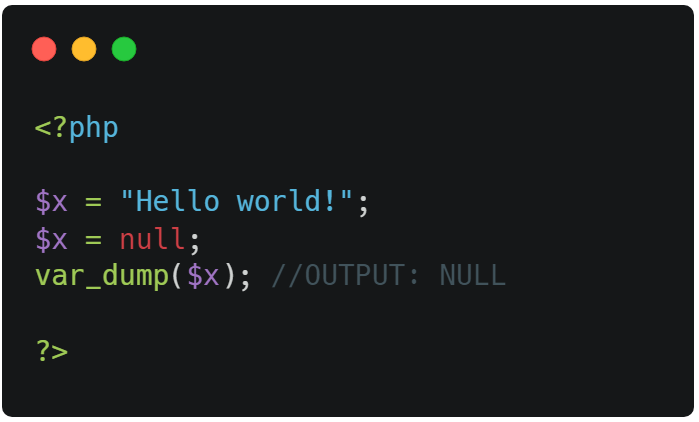DataType in PHP
In the PHP language, variables can store many types. In PHP, there are 8 DataTypes which are divided into 3 main groups.
Group 1 The Scalar Type
It holds only single value. There are 4 scalar data types in PHP.
- Boolean
- Integer
- Float
- String
1. PHP Boolean
A Boolean represents two possible states: TRUE or FALSE Only. It is often used with conditional statements.
⭣ Example ⭣
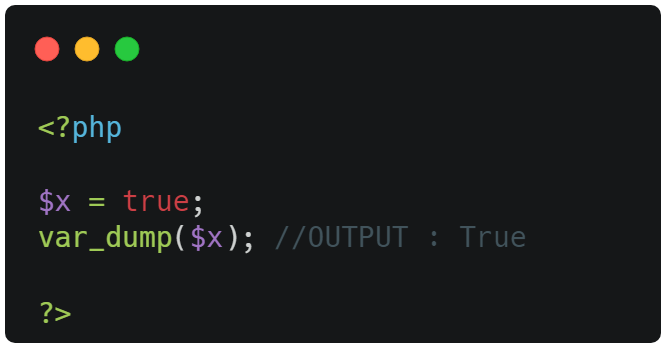
2. PHP Integer
An integer data type is a non-decimal number between -2,147,483,648 and 2,147,483,647.
Rules for integers:⭣ Example ⭣
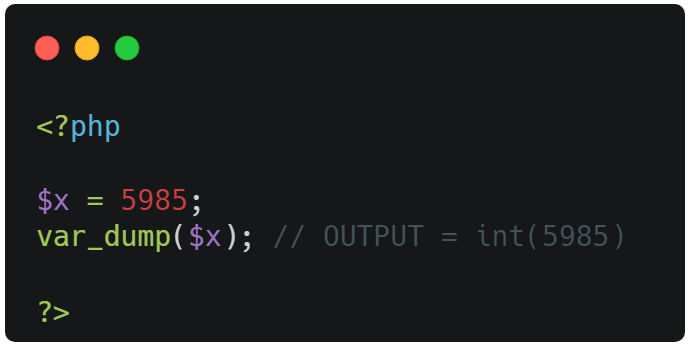
3. PHP Float
A floating-point number is a number with a decimal point. Unlike integer,
it can hold numbers with a fractional or decimal point, including a negative or positive sign.
⭣ Example ⭣
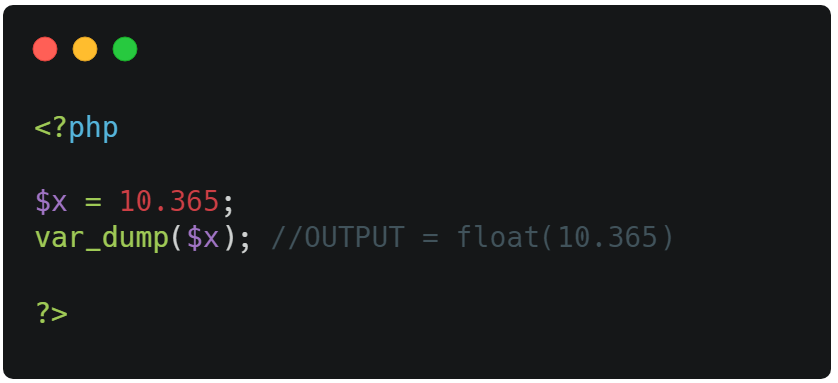
4. PHP String
A string is a sequence of characters, like "Hello world!".
A string can be any text inside quotes. You can use single or double quotes:
⭣ Example ⭣
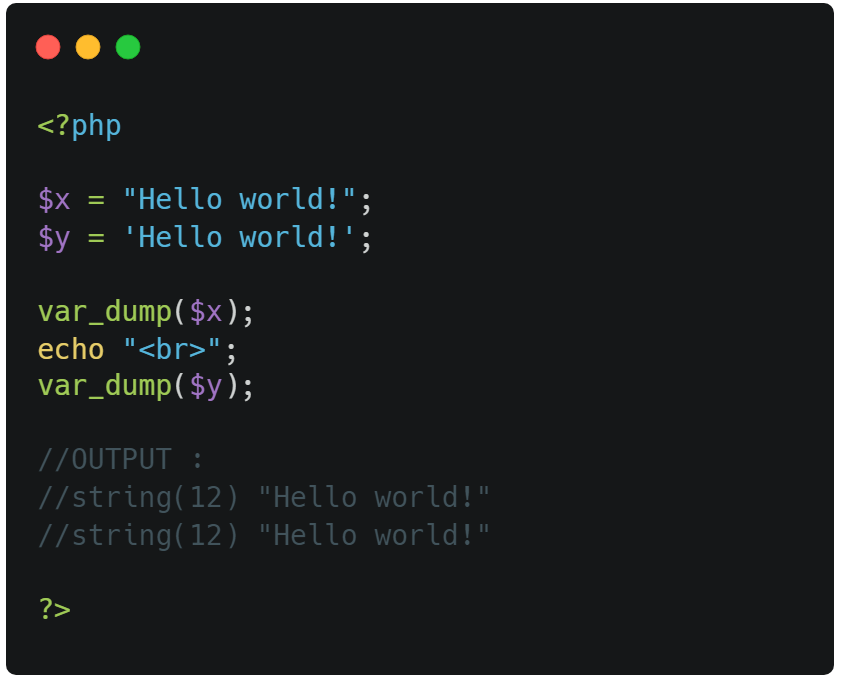
Group 2 The Compound Types
It can hold multiple values. There are 2 compound data types in PHP.
- Array
- Object
1. PHP Array
An array stores multiple values in one single variable.
⭣ Example ⭣
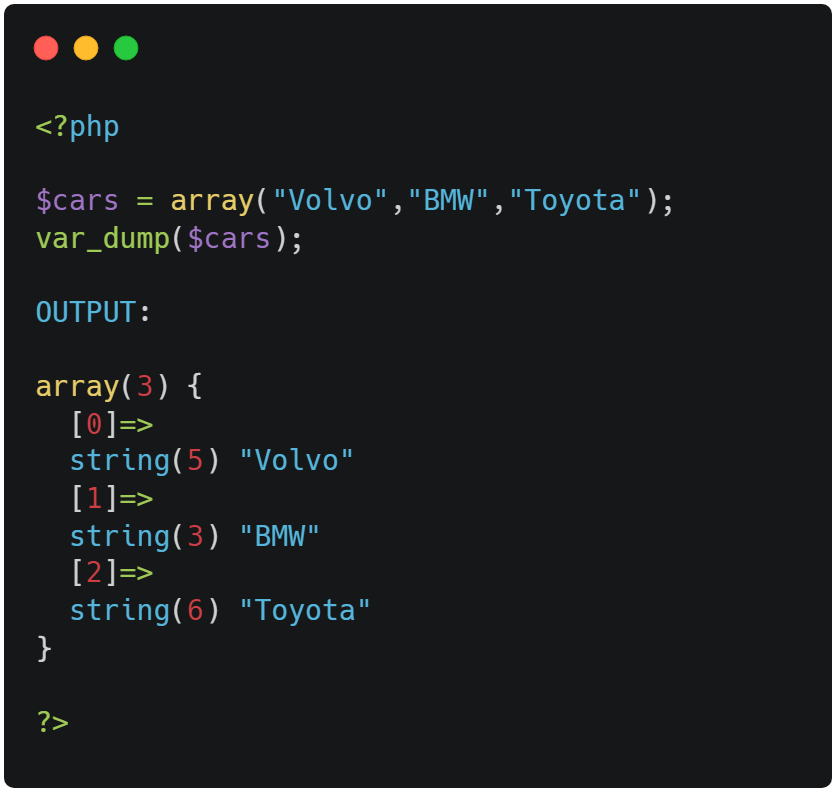
2. PHP Object
Classes and objects are the two main aspects of object-oriented programming.
A class is a template for objects, and an object is an instance of a class.
When the individual objects are created, they inherit all the properties and behaviors from the class, but each object will have different values for the properties.
Let's assume we have a class named Car that can have
properties like model, color, etc. We
can define variables like $model, $color, and so on, to hold the
values of these properties.
When the individual objects (Volvo, BMW, Toyota, etc.) are created, they inherit all the properties and behaviors from the class, but each object will have different values for the properties.
If you create a __construct() function, PHP will
automatically call this function when you create an object from a
class.
⭣ Example ⭣
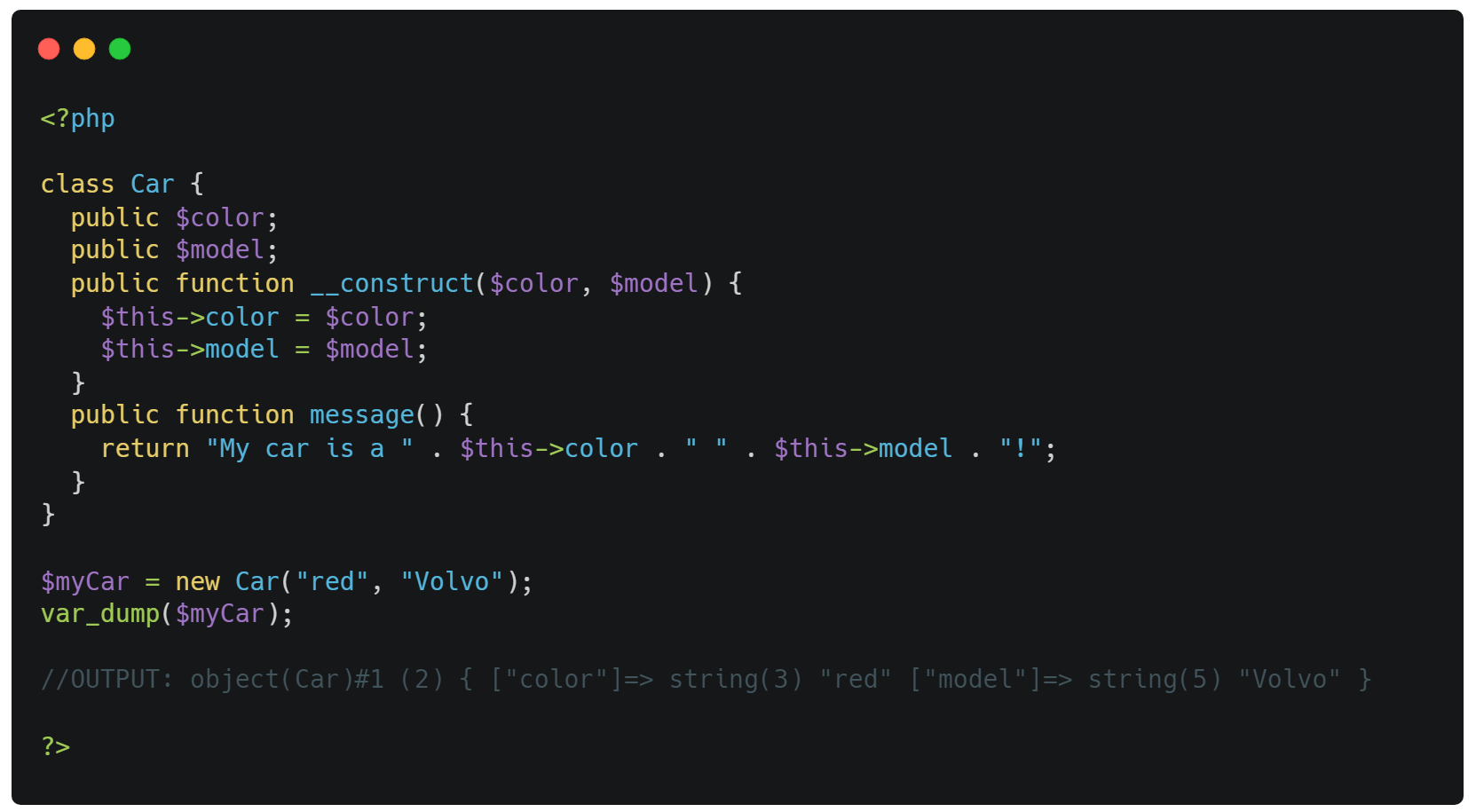
Group 3 The Special Types
- Resource
- NULL
1. PHP Resource
Resources are not the exact data type in PHP. Basically, these are used to store some function calls or references to external PHP resources.
For example - a database call. It is an external resource.
2. PHP NULL Value
Null is a special data type which can have only one value: NULL. A variable of data type NULL is a variable that has no value assigned to it. Tip: If a variable is created without a value, it is automatically assigned a value of NULL.
⭣ Example ⭣
